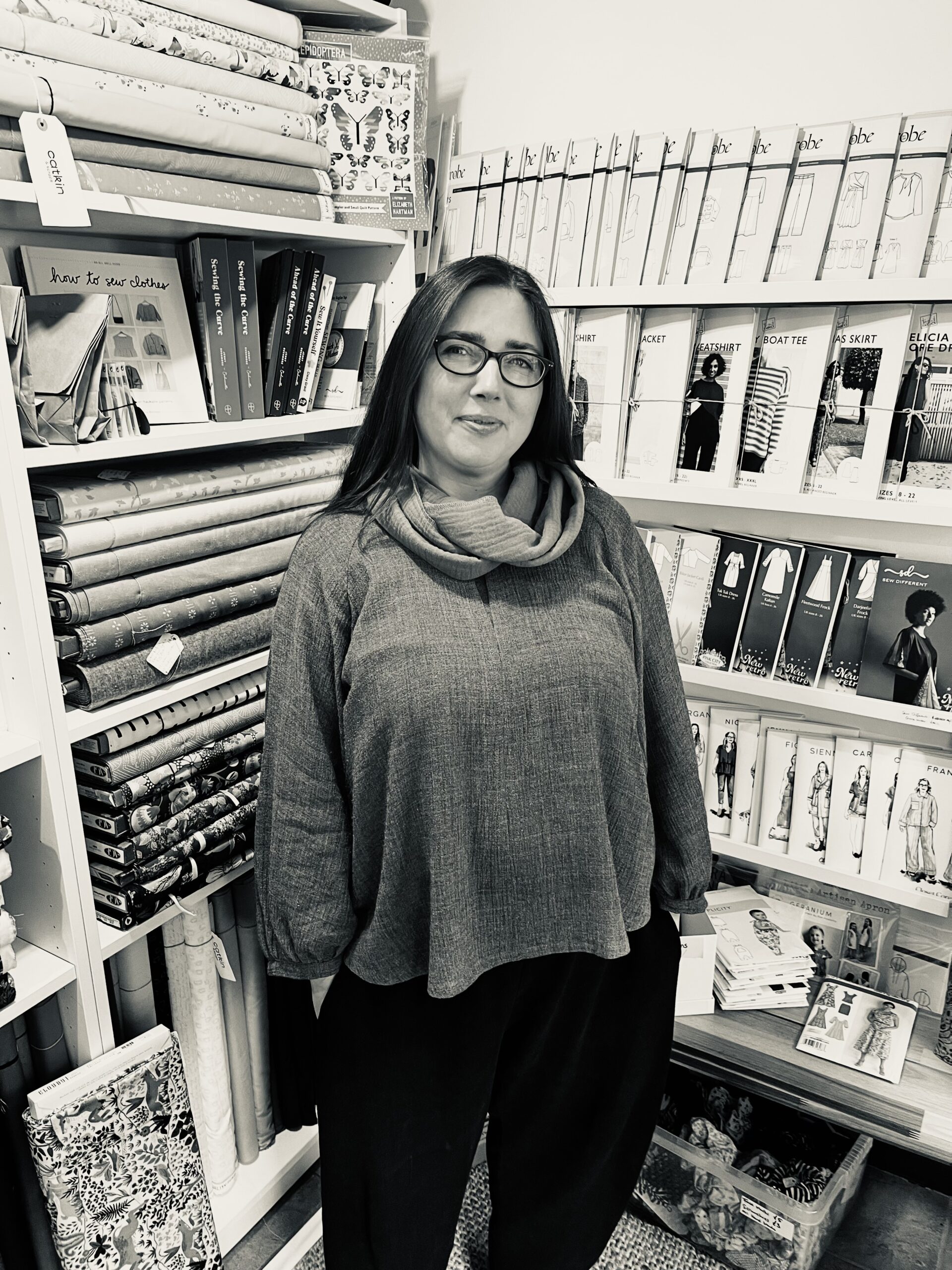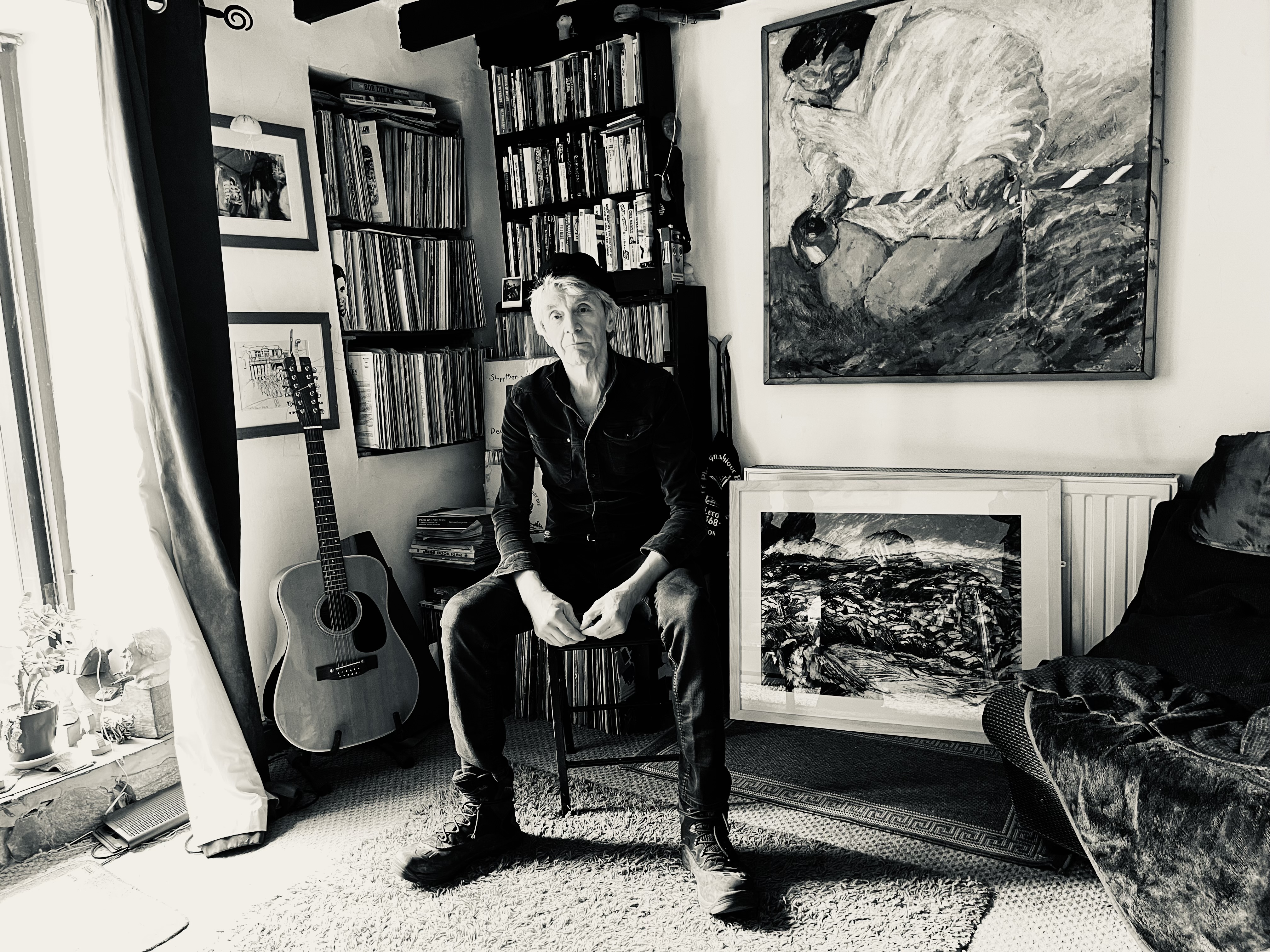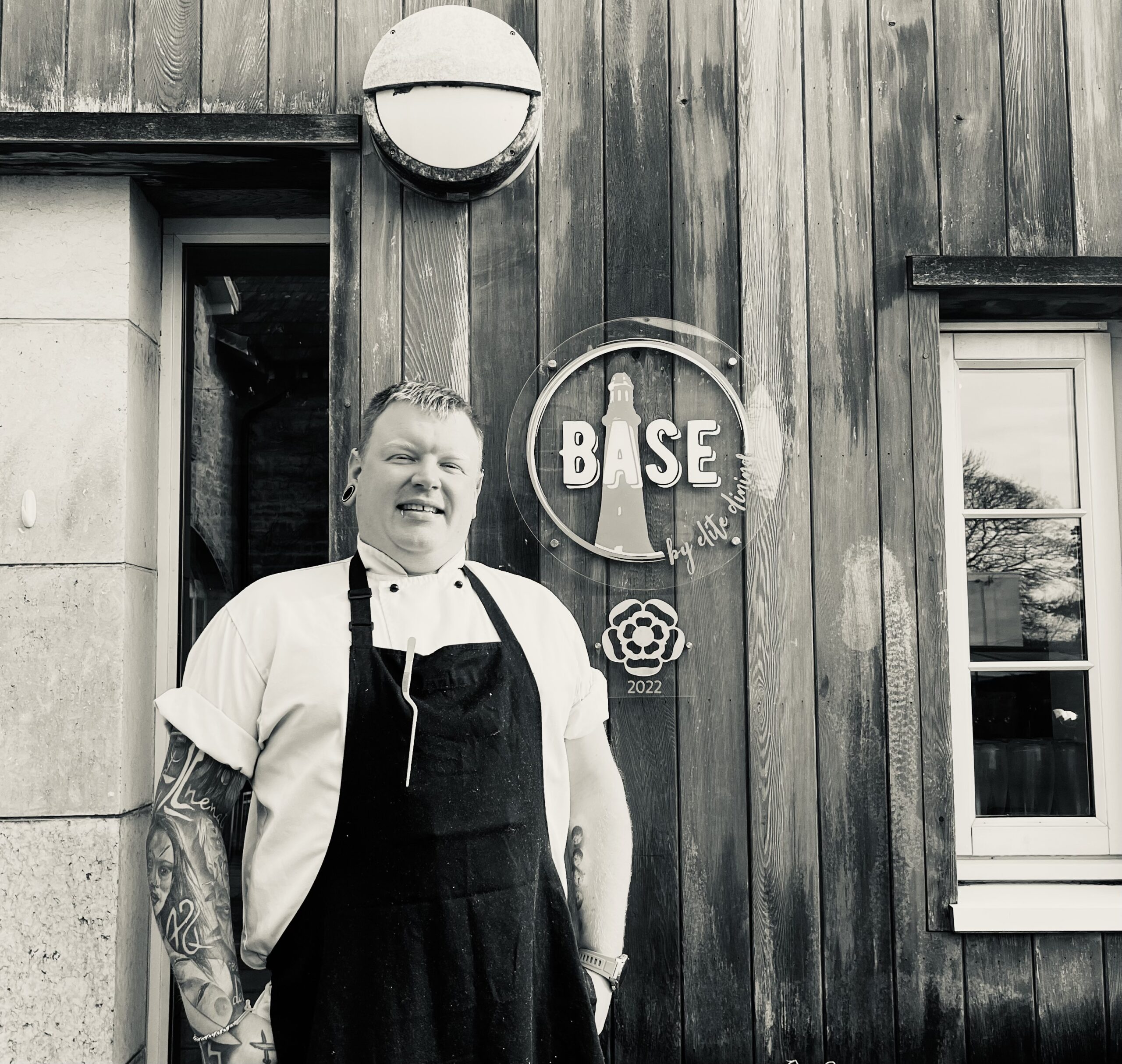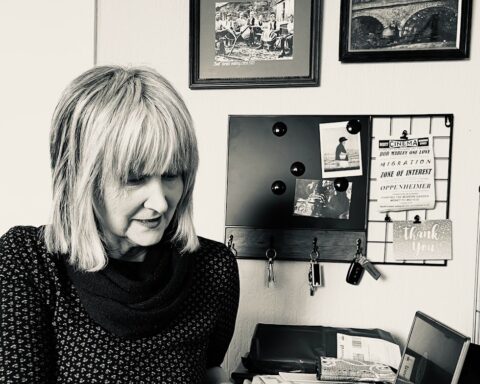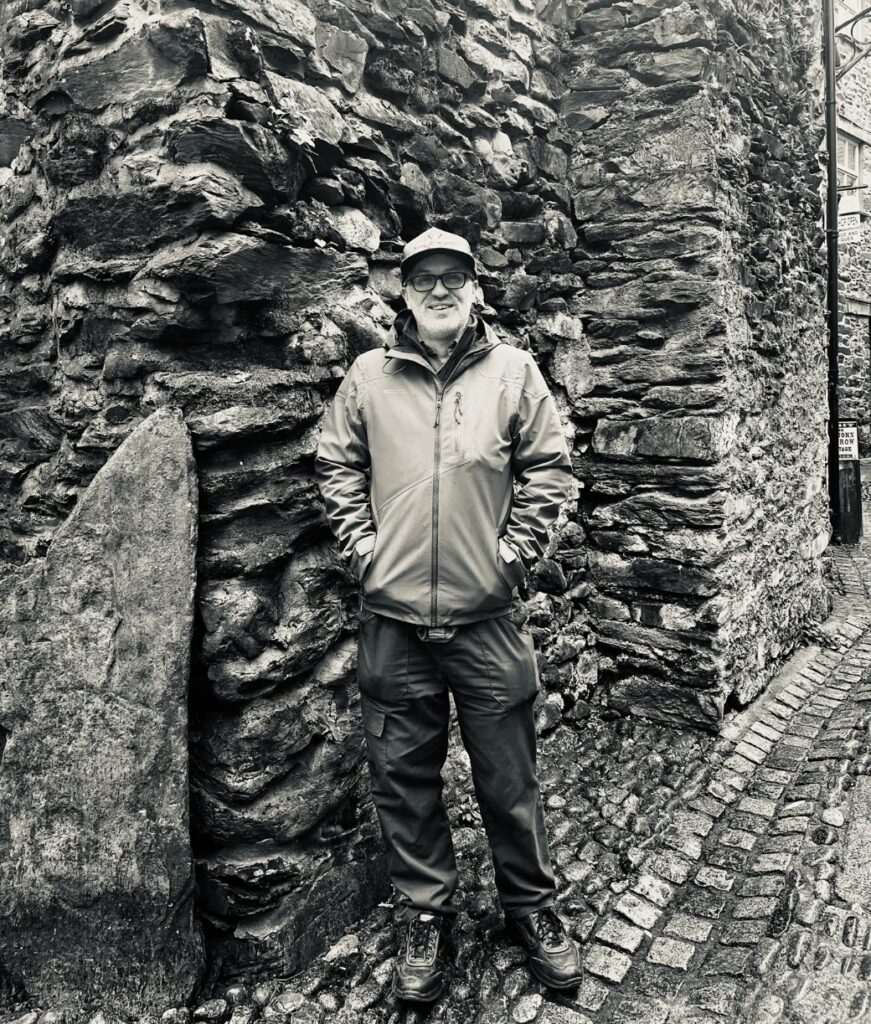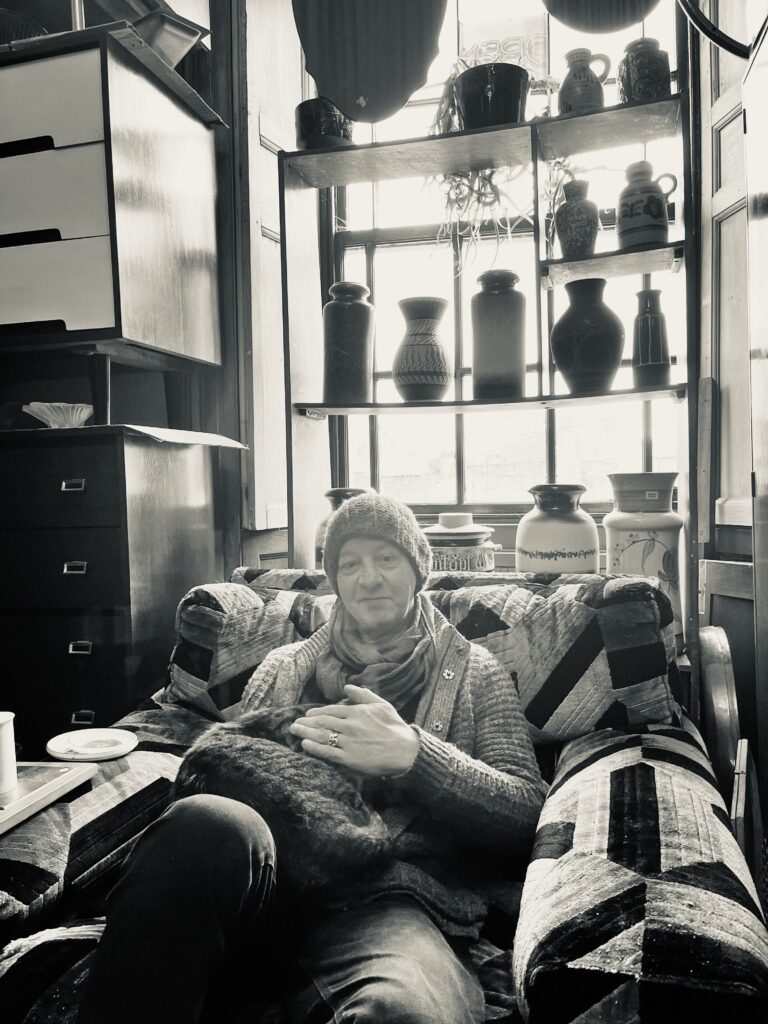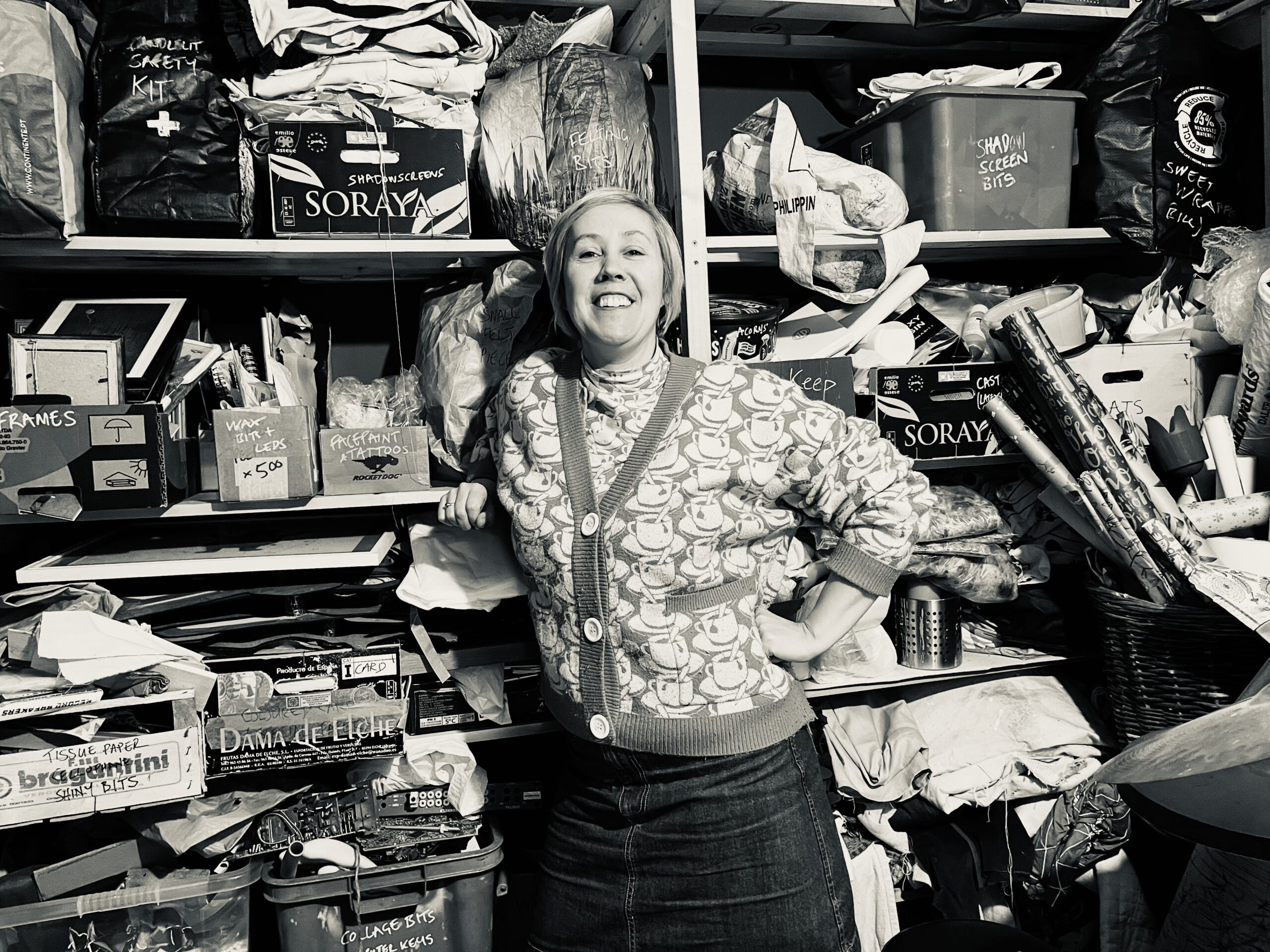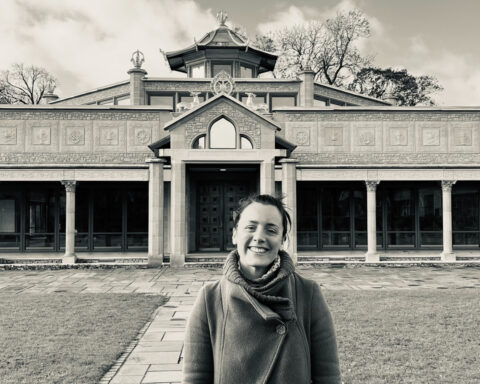|
Getting your Trinity Audio player ready...
|
TIU: Hi Rita! Introduce us to yourself with a little bit of background…
R: I moved to Ulverston in 2006 when I was five months pregnant with my first child. I had just married a sub mariner and we moved up from Plymouth. He was posted to BAE in Barrow for two years. I didn’t know anybody at all, all of my family lives in Holland pretty much apart from a few in Somerset so no family here, no one I knew and it was November. It was pretty grim I have to say! There was no sunshine and every day about four o clock it got dark and started to rain. It was very depressing. I had only ever lived down south before so it was quite a big change. My husband had sworn blind, (because I had never been up here yet and he had visited to pick the house), that the climate was exactly the same as down south – it wasn’t cold and it didn’t rain.
TIU: So he lied!
R: He lied to me!
TIU: So you came up here during pregnancy and settled?
R: We settled here – we had moved around every year until then and it was going to be every two years after but I decided I wanted to put down roots somewhere. After two years he got posted elsewhere but I decided that me and the kids were just going to stay put. I didn’t want to keep pulling them out of school every two years. I wanted to try and build a life for myself because I had moved around quite a lot before that too. I felt Ulverston was perfect for me after getting used to the climate – its a bit colder and more damp but after you have a Spring here its just gorgeous and the people here are lovely. It’s a lovely mix of countryside but still with things to do. I can manage without a car because I am not much of a driver so it felt perfect. It has a health food shop and that was my main draw! It suited me down to the ground. We bought the house and the kids went to the school across the road which was brilliant. In the end my husband and I got divorced but I managed to stay in Ulverston. I got a little job in a sewing shop that was here and I ended up being the manager of that for a few years until the lady who owned it retired and so I kept selling fabrics because I really loved buying fabrics mostly and I needed to make something work for myself.
TIU: So sewing is something you took up quite recently?
R: When I was a kid I hated sewing. It was at a time when they still made girls do sewing and boys do woodwork and I wanted to do woodwork. I was really angry and thought it ridiculous that they based it on gender rather than personal choice. So I was very resentful against sewing and I didn’t really want to do anything girly because I’m a bit contrary and I thought if it was expected of me I didn’t want to do it. So it wasn’t until I was pregnant that I took up knitting and that was my gateway drug into sewing and then getting the job at the sewing shop. I got lots of free sewing lessons and it really took hold. I loved the freedom you have when you can sew your own clothing and are not beholden to what is in fashion. So its suits someone who has a contrary nature!
TIU: You picked up this whole new direction when you came to Ulverston. You cut through the brick wall thing that can happen living in a new place and started to carve a new path.
R: I was lucky when I first moved here. I was pregnant, didn’t know anybody but I went to pre natal classes and met somebody who I became friends with, someone with children around the same age. We stayed friends and she was involved in a lot of things and that pulled me along in getting involved too. We went to pottery classes with a local man who set up the Ulverston Candlelit Walk and I think the Flag Festival too? He was locally out there and he used to babysit my kids! I was quite lucky. Another woman I know who I still see approached me on the street one day. I had a toddler and a baby in a pram and she asked me if I could do with some help. Her grandchildren lived far away and she told me she would love to help with my children.
TIU: Oh wow! I would have probably turned that down, since reading The Gift of Fear and prepping to study Forensic Psychology even a Grandmother would flag up on my radar! It is amazing that that happened and it was just that – help!
R: I was so happy with that. She babysat every Monday so I could go to band practise!
TIU: Like having an angel!
R: That’s what it felt like.
TIU: Good childcare is really hard to come by. So what happened when you finished your sewing shop job?
R: The woman warned me she was going to retire. Alongside working there I had been slowly building up an etsy shop selling my own fabrics and when she retired properly I started buying in fabrics to sell. It was slow but I built up this fabric shop on etsy and then branched out with my own website. I worked some little jobs alongside that too. I worked for Honour Your Flow making washable sanitary towels and I worked for Ripe Cafe in town – a plant based cafe sadly closed now. It didn’t work out for me there anyway as I am not suited to hospitality – they wanted me to start at 6am and I just couldn’t do it! So I decided to try and make a go of my own business. The first year I just worked from home. I had all the fabrics in my bedroom, cleared out all my wardrobes and stored pretty much all the fabrics you see in the shop now. Every day I would bring what had been ordered down three flights of stairs, cut them and post them out. It was nice but after a year I realised I couldn’t just sit in my kitchen forever doing that. I needed to go out into the community more. It wasn’t sustainable for me I needed more interaction. I decided to look for a little shop in town. I walked past this place for rent and thought it was perfect and that was almost a year ago.
TIU: Did you get any start up help?
R: I was worried about it because I didn’t have help. I didn’t take out any loans but I had built up my online business to a point where I could just about manage to cover the costs of the shop but the problem was that running the shop meant that I had less time to to focus on the online business so the online sales went down. Thankfully the sales in the shop came in better than I expected. Its quite risky having something so specific in such a small town like Ulverston.
TIU: Are you a natural risk taker or was it more of a now or never decision?
R: Kind of both. I am naturally a cautious person I like to be prepared for things and like things to be planned out to a certain extent but at the same time this was something I couldn’t plan out because I didn’t know how many people would be interested in learning how to sew here. I knew that a fair amount of local people sewed because of working in the sewing shop. The main income of the owner there was from teaching sewing lessons. I knew that I would have to do that too if I wanted this to be viable because it would not run from online and shop sales alone. Teaching was something I took up within four months of the shop opening. It was a jump in the deep end for me I didn’t know if I would be any good at teaching I just had to have a go. There was no other way to decide.
TIU: You have started small with a ratio of four students to one teacher which seems manageable.
R: Four is the maximum that works for beginners at least. In the old sewing shop the owner would teach more advanced people as well and it would be quite a mixed group but I teach according to level. So I have a group of beginners and a group who have been doing it a lot longer. I teach four to five classes a week and they are fairly well attended.
TIU: Are they mainly Ulverston locals?
R: It’s a mix. I get people from further afield. I have two ladies from Broughton and one or two from Barrow and one from Spark Bridge, sort of surrounding villages too.
TIU: In terms of branching out further then, you might need bigger premises?
R: I do feel a bit limited by the size. It’s quite a squeeze for people in here.
TIU: It seems very compact and tidy. It probably looked huge before you moved in!
R: I spent so long trying to squeeze six people in here but eventually I had to understand. Even four is a squeeze. People do love it though, they love having a small space. They get a lot of attention and it’s quiet here.
TIU: It’s sunny too, despite being in a courtyard.
R: Yes! Ideally I would like somewhere bigger so I could have more fabric and more students.
TIU: Would you take on staff?
R: I have thought about it but at the moment its not viable. It would be too much of a leap I would definitely need to have bigger classes and would need to know I could maintain attendance levels and not run out of people who want to learn how to sew. Not a lot of people have the time and energy to sew their own clothes.
TIU: It’s something I’ve attempted to teach myself in quieter life moments but never succeeded past a couple of face masks during lockdown. Too many duties and conflicting health issues at this point in my life.
R: People often come here and say it was so nice not to have to think about their day to day for two hours and they are glad they are making time for themselves. But you still need to be in a position where you can afford to make the time.
TIU: It’s exactly that. A priority list. Quite a lot of chores are choices at the core of it. Not all, obviously. I would love to have a new interview published on site every week but I choose not to do that because for one with Fibro and CFS I am going to burn out within a month and fail. For two, I prefer to have quality time with my kids wherever possible and would like to maintain some kind of personal life! So, to turn the conversation back a little, I want to ask where you source your stock from?
R: I have lots of different suppliers. Fabric comes from Liberty, (so that’s Italy), I have a supplier in Holland and some English suppliers – quite a diverse mix. I also have a little section of the shop for second hand fabrics that local people can use. They donate if they are having a clear out or whatever. That’s working very well – people appreciate it because its keeping things from landfill, keeping them in circulation and a lot of people who sew have very big fabric stashes. More than they can use. People are happy I can take it off their hands and I am happy to offer fabrics to people who can’t necessarily afford new fabric or those who want to be more environmentally friendly.
TIU: Did you ever take formal dressmaking classes yourself?
R: No but the lady who ran the sewing shop where I worked was a very experienced teacher. She had done a City & Guilds and had been teaching for twenty years. She was very old school, strict and precise.
TIU: I think its often best to learn from a purist in that sense to get the basics, the classical training, before you start to go renegade.
R: I get quite a few people in my classes who have done that – renegade from the beginning but are very happy to go right back to the basics with me and learn everything from scratch, even though they have been sewing for a while. I wasn’t the best student myself by a long shot. I was medium good. I wasn’t the star, I wasn’t a natural. So I feel like it helps me to be a better teacher because I’ve made all the mistakes going.
TIU: Do you have personal favourite fabric designers?
R: Liberty was the first one I fell in love with. They used to be made down the road in Lancaster and our old fabric shop used to stock a lot of Liberty. Its beautiful. The quality, the prints and I still manage to stock it by the skin of my teeth. Its very difficult to get, the minimum order quantities are massive and its expensive. I have a little Liberty fabric shelf but I stock it less and less – its £27.50 a metre now which is a lot!
TIU: I used William Morris patterns when I was experimenting with sewing over the years and I wasted a lot of it! For that reason I didn’t see the logic in ordering Liberty although I agree with you, I am also a huge fan of it.
R: Liberty is the bees knees of fabric but it doesn’t sell brilliantly anymore since the price hike so I do stock a little and people can come and stroke it and um and ahh over it but they don’t have to buy it!
TIU: When it comes to clothing I don’t usually buy anything for more than trade or second hand price unless I really need to. Maybe its from being in the industry or maybe I just have champagne taste on lemonade wages, but I prefer to have less pieces. And those pieces have to be good quality and I prefer them second hand. I wish we were still taught in school how to sew, (like Victorian girls and boys to some level), as a basic skill like maths or English. It is difficult to comprehend how making something to put on your back, one of the basic survival needs is now often considered to be something you need the time and money to learn.
R: It is such a shame people stopped sewing. I am getting people in the shop all the time saying they used to make their own clothes and their mum taught them how to do it. Then they stopped doing it when clothes became ridiculously cheap and time became so scarce. That combination meant people lost these skills. Then I get some people who are of retiring age who really want to learn how to do it because their mum used to do it and its a way of reconnecting with their past. Some people say it makes them feel closer to their mum again – and I’ve got someone whose mum has dementia and she tells her all about the sewing class and that’s a way for them to stay connected because her mum still remembers how to sew.
TIU: It’s such a gender thing even now. Boys were taught the rudiments of repairing clothes in the Victorian era I am pretty sure, before they branched off to learn their gender assigned skills.
R: The soldiers in WW2 used to go out with sewing kits and did their own sewing. These days there are people who can’t even sew a button on. They come into the shop and ask me to sew a button on for them.
TIU: Well keep teaching and teaching and we might soon have a dressmaking renaissance in Ulverston! So in terms of town you mentioned that you have been involved in other local things too?
R: Yes a few years ago I set up a Facebook page called Sustainable Ulverston – when I had a lot of time at home – and we had a weekly walk. I called it the Weekly Wednesday Walkies or something and instead of a having a formal meeting like inside a pub, we would meet outside and walk. That’s the kind of meeting I could get on board with – I hate meetings! It was lovely but sadly I don’t have the time to do it anymore. It was great over covid times it was a really good thing to do while it lasted. The Facebook page is still going and it has quite a few members. I share relevant things that are happening locally. I am very concerned and interested in the environment although I don’t have a lot of time to spare on top of the shop. I do go for a walk every morning before I come to work and I go running two or three times a week.
TIU: Any favourite places in Ulverston you want to share with us?
My favourite spot in Ulverston is at the back of Hoad. Near where the private woods are with lots of bluebells at this time of year. You are allowed through the wood but to find this place keep outside of it and go straight up the hill alongside it. You can turn right onto the fell and there is a little hillock that’s the highest spot you can get to with a beautiful 360 degree view. You can see all the mountains in the distance and coming from Holland that is so special to me.
Catkin & Scraps is housed at 2-3 Potter’s Court, Market Street, Cumbria, LA12 7TQ. It is open Tues, Thursday, Friday and Saturday 10am – 4pm. Teaching happens all year round including drop in Sewcials. Please check the website for more info : Catkin & Scraps – The online sewing shop with an inclusive heart (catkinandscraps.co.uk)
